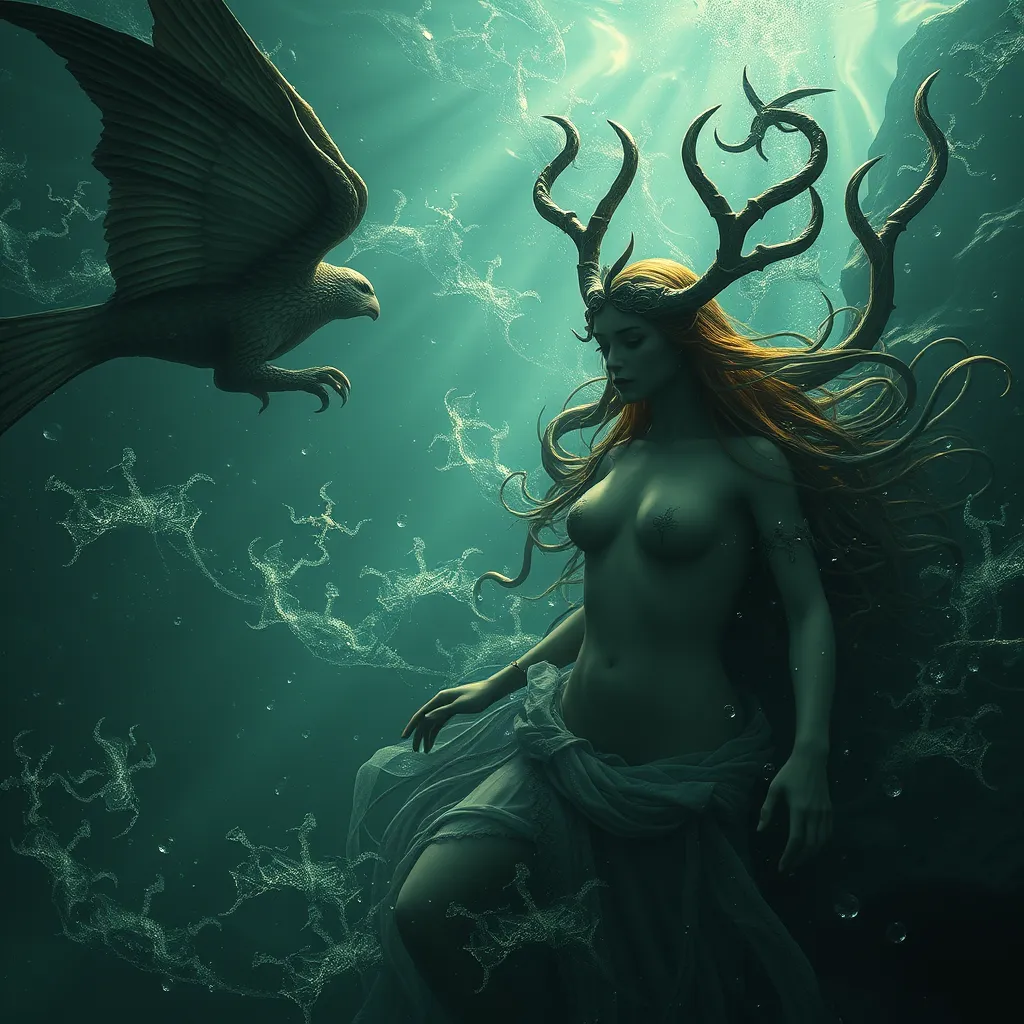The Alluring Siren: Exploring the Nymphs of the Sea in Classical Literature
I. Introduction
In classical mythology, sea nymphs and sirens are enchanting figures that embody the allure and danger of the ocean. Sea nymphs, often depicted as beautiful maidens, represent various aspects of the sea, while sirens are known for their mesmerizing songs that lure sailors to their doom. These mythical beings play a significant role in literature and culture, symbolizing themes of temptation, beauty, and peril. This article aims to explore the historical context, literary representations, and artistic interpretations of these captivating figures, shedding light on their enduring legacy.
II. Historical Context of Sea Nymphs in Ancient Mythology
The concept of nymphs in ancient mythology has deep roots, with origins tracing back to Greek and Roman traditions. Nymphs were considered minor deities associated with nature, often inhabiting specific locations like rivers, forests, and the sea. Over time, the idea of sea nymphs evolved, giving rise to various classifications, including naiads, who are fresh-water nymphs, and oceanids, who are daughters of Oceanus, the Titan god of the sea.
To better understand sea nymphs and sirens, it is essential to distinguish between these figures:
- Sea Nymphs: Generally benevolent, these creatures assist sailors and gods.
- Naiads: Freshwater nymphs associated with rivers and springs.
- Sirens: Often depicted as dangerous seductresses, their songs lead sailors to disaster.
In ancient societies, these figures held cultural significance, often representing the unpredictable nature of the sea and the human experience of desire and danger.
III. The Sirens: Enchantresses of the Sea
Sirens are perhaps the most famous sea nymphs in classical literature, characterized by their enchanting beauty and captivating voices. Descriptions in classical texts paint them as half-bird, half-woman creatures that inhabit rocky shores and sing songs irresistible to sailors.
One of the most iconic myths involving sirens is that of Odysseus from Homer’s Odyssey. In this tale, Odysseus, aware of the sirens’ deadly allure, orders his men to plug their ears with beeswax while he himself is tied to the mast of the ship. As they sail past, the sirens sing of knowledge and the secrets of the world, tempting Odysseus to free himself, but he remains bound, ultimately escaping their deadly embrace.
The symbolism of the sirens’ songs encapsulates themes of temptation and danger. Their melodies represent the allure of the unknown and the peril that often accompanies desire.
IV. Other Sea Nymphs: Nereids and Oceanids
Beyond sirens, classical mythology is rich with other sea nymphs, notably the Nereids and Oceanids. The Nereids, daughters of Nereus, the Old Man of the Sea, are typically depicted as gentle and kind. They are often seen aiding sailors and gods alike, embodying the nurturing aspect of the sea.
On the other hand, Oceanids are the daughters of Oceanus and Tethys, representing the vastness and depth of the ocean. They are often associated with the primordial forces of nature and are less commonly depicted in myths compared to Nereids.
While sirens evoke danger and seduction, Nereids and Oceanids emphasize the nurturing and life-giving aspects of the sea. This contrast highlights the multifaceted nature of water in mythology.
V. Literary Representations of Sea Nymphs
The portrayal of sea nymphs in literature has evolved over centuries. Key texts such as Homer’s Odyssey and Ovid’s Metamorphoses provide rich depictions of these figures, revealing their complexities and roles in narratives.
In poetry and epic literature, sea nymphs often symbolize beauty and danger. Ovid, for instance, explores the transformations of nymphs and their interactions with gods and mortals, illustrating their power and influence. Over time, the portrayal of nymphs has shifted from ethereal beings to more complex characters, reflecting changing societal views on femininity and nature.
VI. Artistic Interpretations of Sirens and Sea Nymphs
Visual art has long celebrated the beauty and mystique of sea nymphs and sirens. In classical antiquity, sculptures and paintings depicted these figures with flowing hair and graceful forms, often surrounded by marine elements.
The influence of these mythological beings extended into the Renaissance, inspiring artists like Botticelli and Titian, who incorporated nymphs into their works, emphasizing themes of beauty and seduction. In modern art, the imagery of nymphs continues to resonate, appearing in various forms of media, from literature to film, highlighting their enduring appeal.
VII. Thematic Elements Associated with Sea Nymphs
Sea nymphs embody a range of thematic elements that resonate throughout literature and art:
- Beauty: Their physical allure often serves as a metaphor for the enchanting yet dangerous aspects of nature.
- Seduction and Danger: The duality of their nature reflects the tension between desire and destruction.
- Nurturing vs. Destructive Forces: Nymphs can be both protective and perilous, embodying the complexities of the natural world.
- Human Emotions: The narratives surrounding sea nymphs often mirror human experiences of longing, loss, and temptation.
VIII. Conclusion
In conclusion, sea nymphs and sirens hold a significant place in classical literature, representing the allure and mystery of the sea. Their roles in ancient myths and literary texts reveal deep cultural meanings and human emotions, from temptation to nurturing. The lasting impact of these figures is evident in modern art and literature, where their beauty and danger continue to captivate audiences. The siren’s call remains a powerful symbol of the mysteries that lie beneath the waves, reminding us of the enchanting yet treacherous nature of the sea.



